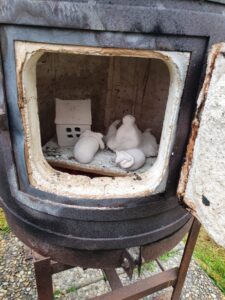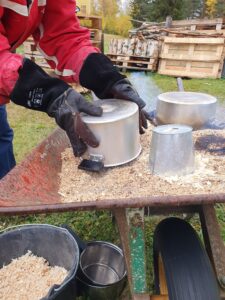How is Raku pottery being made?
The characteristic features of Raku creations are perhaps the black cracks formed in the so-called "naked Raku". You can also perform something called blackfiring, where you burn the item without a glaze to get a black surface.

There are many methods and techniques within Raku. An exciting area where there is a lot to explore and experiment with. However, it is not certain that the same result will be achieved despite a similar procedure. There are a few aspects to consider when it comes to Raku firings, such as weather and temperature, time intervals for the various steps, and the composition of the glazes.
You can burn your Raku items in different ways. For example in a metal barrel, insulated with ceramic wool, which is fired with a gas burner. It is also possible to build an oven made of bricks and fire it with wood.
The actual Raku burning
The biscuit-fired items are placed in a Raku oven. Where they are heated up to about 1000 degrees Celsius.

They are then removed from the oven and placed in a special reduction chamber, with sawdust at the bottom. Due to the temperature shock, cracks form in the glaze. You can also cause cracks by spraying water on the hot ceramic item.

Sawdust is thrown over the items and it starts to burn. Then it is time to cover the items with a metal container, in order to restrict the oxygen supply and induce smoke formation. The smoke penetrates into the cracks on the glaze and forms a black pattern of crackles.

